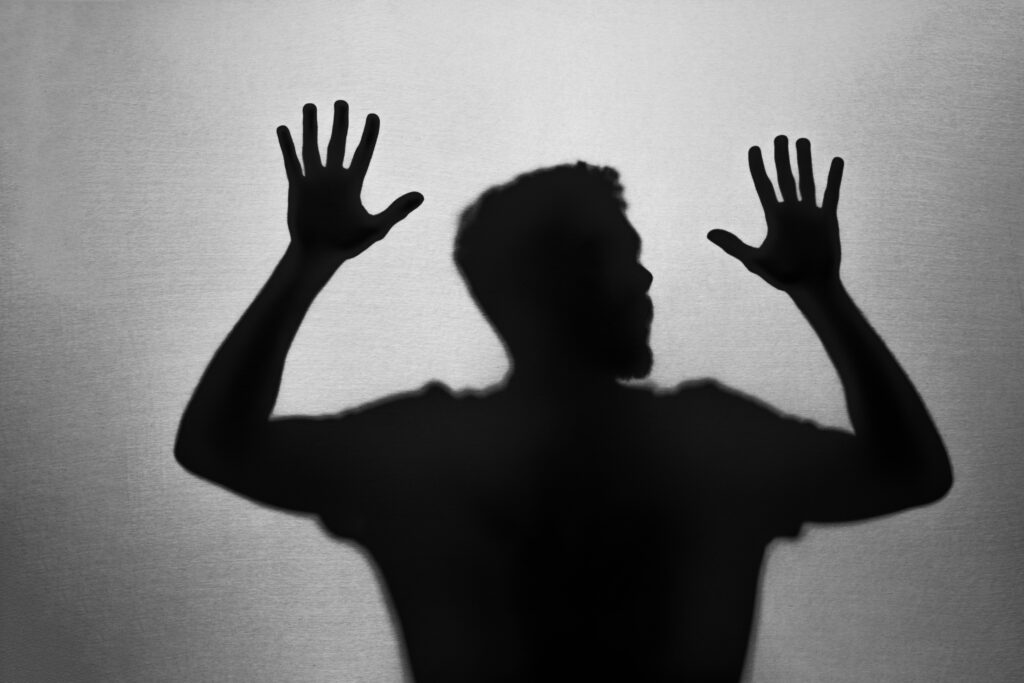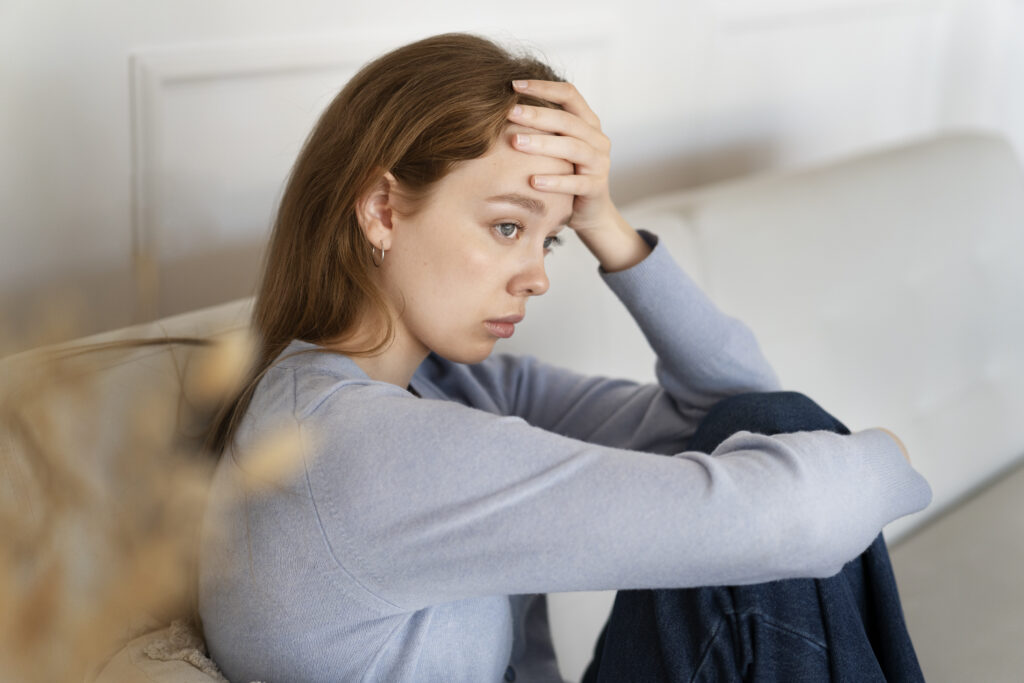Anxiety. It’s a word that sends shivers down the spines of millions of Americans. Whether it’s a constant low-grade hum or sudden, overwhelming panic attacks, anxiety can significantly impact our daily lives, relationships, and overall well-being. But fear not! You’re not alone, and there are effective ways to manage anxiety and reclaim control.
This blog delves into the world of anxiety, offering practical tips, mindfulness techniques, and guidance on seeking professional help when needed. Consider it your roadmap to navigating the often-choppy waters of anxiety and finding your calm harbor.
Understanding Your Anxiety: A Deeper Dive
Delving deeper into the nature of your anxiety is like embarking on a journey of self-discovery. This understanding empowers you to manage your symptoms more effectively and reclaim control over your well-being.
Anxiety’s Evolutionary Roots:
Anxiety, at its core, is a primitive survival mechanism. Imagine our ancestors navigating a world filled with predators and uncertainties. That heightened sense of alertness, the racing heart, and the urge to flee – these were crucial for survival. Fast forward to today, and while physical threats may be less prevalent, our brains haven’t caught up. The same mechanisms triggered by real dangers can now be activated by everyday stressors, social situations, or seemingly harmless thoughts.
The Many Faces of Anxiety:
Anxiety doesn’t wear a one-size-fits-all mask. It manifests in various forms, each with its own signature set of symptoms and triggers:
Generalized Anxiety Disorder (GAD): A constant, low-grade worry about various aspects of life, often accompanied by physical symptoms like muscle tension, fatigue, and sleep disturbances.
Panic Disorder: Sudden, intense episodes of fear and physical distress, like rapid heart rate, shortness of breath, and chest tightness, often accompanied by a sense of impending doom.
Social Anxiety Disorder (Social Phobia): Intense fear of social situations due to the worry of being judged or scrutinized by others.
Specific Phobias: Intense fear of a specific object or situation, like spiders, heights, or flying.
Obsessive-Compulsive Disorder (OCD): Intrusive thoughts (obsessions) and repetitive behaviors (compulsions) aimed at managing anxiety caused by these thoughts.
Identifying Your Triggers:
Understanding your specific triggers is like cracking the code to your anxiety. What situations, thoughts, or events typically spark your anxious response? Recognizing these triggers empowers you to anticipate them and prepare coping mechanisms in advance. For example, if public speaking triggers your social anxiety, practice relaxation techniques beforehand and visualize yourself delivering a successful presentation.
Calming the Storm: Practical Tips

Remember, anxiety doesn’t have to control your life. Here are some practical tips, enriched with specific details, to help you ride the waves of anxiety and find your inner calm:
1. Deep Breathing:
Mastering your breath is like holding the remote control to your nervous system. Instead of shallow, rapid breaths, try this:
Find a quiet space: Sit comfortably or lie in a peaceful environment.
Focus on your belly: Place one hand on your abdomen and the other on your chest.
Inhale deeply through your nose: Feel your belly expand while your chest remains relatively still. Imagine drawing in peace and calm with each inhale.
Exhale slowly through pursed lips: Feel your belly sink back in as you release tension with each exhale. Count to 4 or 6 on the exhale for added control.
Repeat for 5-10 minutes: This simple practice activates the relaxation response, slowing your heart rate, lowering blood pressure, and easing muscle tension.
2. Progressive Muscle Relaxation:
Tense and release specific muscle groups, one at a time, to melt away physical tension:
Start with your toes: Clench them tightly for 5 seconds, feeling the tension build. Then, release quickly and fully, noticing the relaxation that washes over.
Move up to your calves, thighs, and glutes: Repeat the clench and release, focusing on each muscle group individually.
Progress to your core, chest, arms, and neck: Don’t forget your face! Clench your jaw, furrow your brows, then release completely.
With each release, imagine the tension draining away, replaced by a wave of calmness. This technique helps reduce overall anxiety by addressing the physical manifestation of stress.
3. Mindfulness Meditation:
Mindfulness isn’t about emptying your mind; it’s about observing your thoughts and feelings without judgment. Here’s a simple way to start:
Find a comfortable position: Sit or lie down, close your eyes, or soften your gaze.
Focus on your breath: Feel the rise and fall of your chest and abdomen with each inhale and exhale.
Notice your thoughts: Don’t get caught up in them, acknowledge them and let them go like passing clouds.
If your mind wanders, gently bring your attention back to your breath. This practice cultivates inner peace and helps you detach from negative thought patterns that fuel anxiety.
4. Exercise:
Get your body moving and release those feel-good endorphins! Here are some options:
Find an activity you enjoy: Brisk walking, dancing, swimming, yoga, team sports – choose something you look forward to, not dread.
Start small and gradually increase duration and intensity: Consistency is key, even 15-minute bursts throughout the day can make a difference.
Focus on the present moment: Immerse yourself in the sensations of movement, your breath, and the environment around you. This mindfulness aspect adds an extra layer of anxiety reduction.
5. Healthy Habits:
Nourish your body and mind for optimal well-being:
Prioritize sleep: Aim for 7-8 hours of quality sleep each night. Establish a regular sleep schedule and create a relaxing bedtime routine.
Eat a balanced diet: Choose nutrient-rich foods like fruits, vegetables, whole grains, and lean protein. Limit processed foods, sugar, and excessive caffeine.
Stay hydrated: Drink plenty of water throughout the day to keep your body functioning optimally. Dehydration can contribute to anxiety symptoms.
Limit alcohol and caffeine: These substances can exacerbate anxiety symptoms. Opt for healthier alternatives to manage stress and unwind.
6. Challenge Negative Thoughts:
Don’t let your inner critic hijack your well-being:
Identify your negative thought patterns: Pay attention to the self-defeating stories you tell yourself.
Question their validity: Are these thoughts realistic? Helpful? Challenge them with more positive and empowering alternatives.
Replace negativity with self-compassion: Talk to yourself like you would talk to a trusted friend. Be kind and understanding.
7. Connect with Others:
You’re not alone in this. Social support is a powerful tool:
Talk to trusted friends and family: Share your struggles and seek their empathy and understanding.
Join a support group: Connecting with others who understand your experience can be incredibly validating and helpful.
Consider therapy: A licensed therapist can provide personalized guidance and equip you with effective coping mechanisms.
Mindfulness Techniques for Everyday Life: Deeper Dives
Mindfulness practices offer powerful tools to combat anxiety by anchoring you in the present moment and quieting the storm of anxious thoughts. Let’s explore three techniques in more detail:
1. The 5 Senses Exercise:
This seemingly simple exercise has profound grounding effects. Devote 5-10 minutes to fully engaging your senses, one by one:
Sight: Notice the vibrant colors, intricate patterns, and subtle details around you. Is there a calming blue sky, a fascinating texture on a nearby object, or a playful shadow dance on the wall?
Hearing: Tune into the symphony of sounds: the chirping of birds, the hum of traffic, the rustle of leaves, or the calming rhythm of your breath.
Smell: Take a deep inhale and savor the aromas around you. Is it the fresh scent of rain, the comforting fragrance of coffee brewing, or a nearby plant?
Taste: If mindful, pay attention to the subtle flavors in your mouth, even if it’s just the refreshing coolness of water. Savor each nuance and appreciate the experience.
Touch: Feel the textures of your clothes against your skin, the coolness of the floor beneath you, or the warmth of a cup in your hands. Notice any sensations, pleasant or neutral, without judgment.
By fully engaging your senses, you step outside your anxious thoughts and become present in the here and now, promoting a sense of calm and grounding.
2. The Guided Imagery Exercise:
Escape to your sanctuary through your imagination:
Find a quiet space: Sit or lie comfortably, close your eyes, and take a few deep breaths.
Set your intention: Imagine yourself in a peaceful and calming place that brings you joy and serenity. Is it a serene beach, a lush forest, or a cozy cabin in the mountains?
Engage your senses: Visualize the vivid details of your chosen place. What do you see? Hear? Smell? Feel? Taste? Let your imagination paint a rich sensory experience.
Immerse yourself: Feel the warmth of the sun on your skin, the caress of a gentle breeze, or the comfort of soft grass beneath your feet. Engage fully with the imagined sensations.
Stay present: Allow yourself to be absorbed in this peaceful sanctuary. Let go of worries and anxieties as you enjoy the tranquility.
Gradually return: When you’re ready, gently bring your awareness back to the present moment. Carry the calmness you experienced in your guided imagery throughout your day.
Seeking Professional Help:
If self-help strategies aren’t enough, seeking professional help is crucial. Therapists trained in cognitive-behavioral therapy (CBT) and other evidence-based approaches can equip you with powerful tools to manage anxiety and improve your quality of life. Don’t hesitate to reach out for help – it’s a sign of strength, not weakness.
Remember:
You are not alone. Millions of Americans struggle with anxiety.
Anxiety is treatable. With the right approach, you can manage your symptoms and live a fulfilling life.
Seeking professional help is a sign of strength. Therapists can provide valuable guidance and support.


